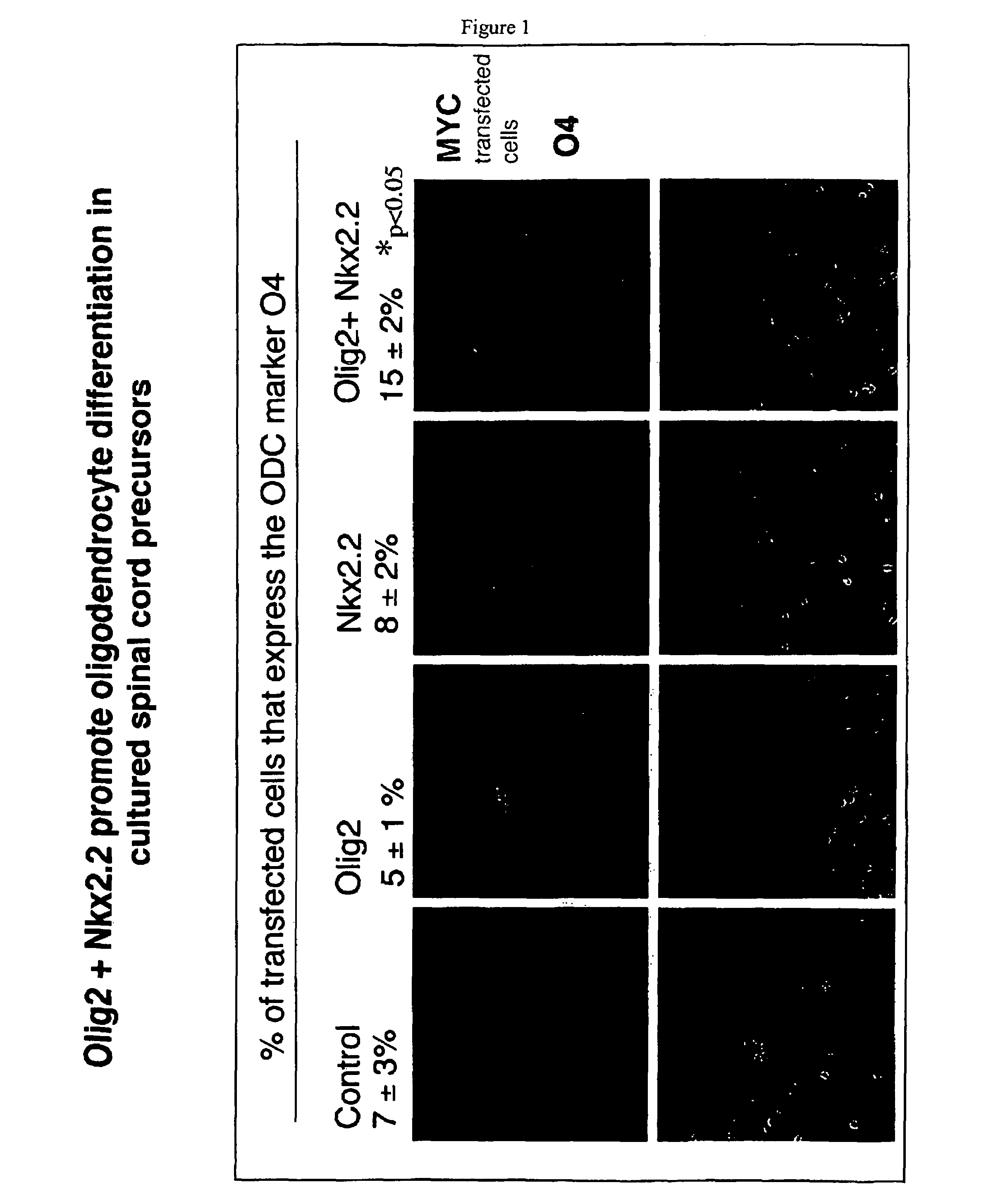Oligodendrocyte determination genes and uses thereof
a technology of oligodendrocytes and genes, applied in the field of oligodendrocyte determination genes, can solve the problems of progressive neurological deterioration, hard characterization of ms, and demyelinating diseases, and achieve the effect of enhancing the differentiation of cells
- Summary
- Abstract
- Description
- Claims
- Application Information
AI Technical Summary
Benefits of technology
Problems solved by technology
Method used
Image
Examples
examples
[0308]The following example is included to demonstrate preferred embodiments of the invention. It should be appreciated by those of skill in the art that the techniques disclosed in the example which follows represent techniques discovered by the inventor to function well in the practice of the invention, and thus can be considered to constitute preferred modes for its practice. However, those of skill in the art should, in light of the present disclosure, appreciate that many changes can be made in the specific embodiments which are disclosed and still obtain a like or similar result without departing from the spirit and scope of the invention.
[0309]We performed experiments to show that in mammals, co-expression of the Olig genes and Nkx2.2 genes enhanced oligodendrocyte precursor formation. Specifically, cultured E13.5 rat spinal cord neural stem cells were transfected by either Olig2 or Nkx2.2 alone, or by both genes, or mock-transfected. The expression of the oligodendrocyte (OD...
PUM
| Property | Measurement | Unit |
|---|---|---|
| length of time | aaaaa | aaaaa |
| length of time | aaaaa | aaaaa |
| cell cycle time | aaaaa | aaaaa |
Abstract
Description
Claims
Application Information
 Login to View More
Login to View More - R&D
- Intellectual Property
- Life Sciences
- Materials
- Tech Scout
- Unparalleled Data Quality
- Higher Quality Content
- 60% Fewer Hallucinations
Browse by: Latest US Patents, China's latest patents, Technical Efficacy Thesaurus, Application Domain, Technology Topic, Popular Technical Reports.
© 2025 PatSnap. All rights reserved.Legal|Privacy policy|Modern Slavery Act Transparency Statement|Sitemap|About US| Contact US: help@patsnap.com

